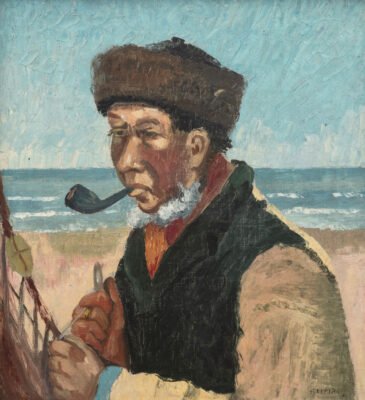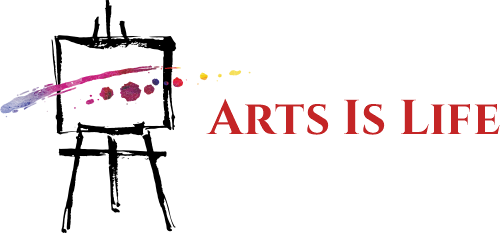“Time is a boomerang, not an arrow,” Jeanette Winterson once wrote. “The past is always returning and repeating.” Nowhere is this more true than in our dreams, a place where past, present and future fold in on each other, and where fact flows into fantasy.
This porous inner world is the subject of Ramona Jingru Wang’s latest photo series, Poor Image. Through the aesthetic of vernacular photography, she explores “the way memories often sneak into our dreams, surfacing as strange, random images or scenes”, and what happens when you attempt to recreate them with a camera. “Poor Image is all about the confusing triangular relationship between memories, dreams, and photographs,” she tells Dazed.
The spark for the project was an old photo of Wang around the age of ten, standing next to a bull in a rural village. When she discovered the image recently, she couldn’t remember any of it, “not the village, nor the bull”. Having lived in cities her whole life – first Guangzhou in southern China, and now New York – this rural scene felt like a weird dream, rather than a misplaced memory.
“I’ve never been good at remembering things and I always have very lucid dreams, so as time goes by I tend to get the two confused,” she explains. “I’d forget things that had actually happened, and think my dreams were memories.” This is partly why she gravitated towards photography in the first place: “For the longest time, I’ve developed a dependency on taking photos as a way to keep track of real memories and distinguish them from dreams.”
I’ve never been good at remembering things and I always have very lucid dreams, so as time goes by I tend to get the two confused – Ramona Jingru Wang
After seeing the photograph of her younger self with the bull, however, Wang decided to flip the logic – “to intentionally create photos that look like dreams”. Unsettling the boundary between the two, Wang experimented with videotapes, “a medium deeply tied to how many of us remember our childhoods”. With their grainy, glitchy footage, her short films and GIFs evoke the image loops that can occur as we sleep – recurring pictures or vignettes with no clear narrative.
While dreams are personal and private, a sense of “shared nostalgia” is key to Poor Image. Sometimes staging scenes with friends, sometimes capturing “fleeting, dream-like fragments of everyday life”, Wang focuses her lens on familiar objects or elements; cakes, balloons, childhood toys, trips into nature.
“I wanted to get a hold of the kind of image that might provoke a collective sense of nostalgia – something that looks like it would have existed in the past, but not exactly to any individual person – and then situate that within a surreal or abstract scenario,” she says. “We threw in these nonsensical elements, like ‘What if we walk a remote control car like walking a dog?’”
Much of the project was shot along the shorelines of Coney Island. It’s an apt metaphor for the liminal realm of sleep; dreams rising from the depths of our subconscious, ebbing and flowing like the tides. For Ramona, who’s always lived in port cities, this motif is also deeply personal. “I’ve been longing a lot in my dreams lately, especially longing for home. I think it’s because I’ve been literally ‘overseas’ from where I grew up for a very long time, hence being ‘overseas’ from a lot of my old memories,” she muses. “I guess they’ve crept into my dreams and morphed into images of water.”
Intentionally disorienting and unreliable, Wang’s project is perhaps truer to the actual experience of dreaming than any written description might be. It plays on the common experience of waking from a vivid dream, only for the story to blur and slip away from us seconds later, some impalpable mood or emotion all that remains. And how, if we do manage to remember a dream in detail, it can be harder still to put it into words. Language, a linear systemic construct, often fails us when conveying the disorderly dream world. “Dreams are slippery and hard to grasp, like trying to hold water in your hands,” Wang says. “I think the feeling of nostalgia is equally ineffable. Both exist in vagueness to me.”
Dreams are slippery and hard to grasp, like trying to hold water in your hands. I think the feeling of nostalgia is equally ineffable. Both exist in vagueness to me – Ramona Jingru Wang
Her series takes its name from Hito Steyerl’s influential essay, In Defense of the Poor Image (2009). Wang turned to the text to get closer to her “raw intention for image-making”, but Steyerl’s theory resonates in more ways than one. Describing digital images like thumbnails, AVIs and JPEGs, Steyerl writes: “The poor image is a copy in motion. Its quality is bad, its resolution substandard. As it accelerates, it deteriorates. It is a ghost of an image…”
This is true of how our memories lose their clarity over time, and how those memories then mutate into dreams – how they are “compressed, reproduced, ripped, remixed”, to borrow Steyerl’s words, just like a pixelated “poor image”. How, in turn, the intensity and impact of our dreams often deteriorates in the process of retelling them.
Wang’s attraction to poor quality imagery is also rooted in her broader belief in photography as “an act of care”, which materialises in earlier series such as My friends are cyborgs, but that’s okay (2023). “When we take a photo of our friend, our grandma, our cat, we take the photos because we care for them, and aesthetically a lot of these vernacular photographs are lo-fi poor images, which I think resonates with this project a lot,” she says.
Care is evident in her collaborative process, her constant involvement of friends in her image-making. And it is evident in the way she approaches dreaming – something that is often isolating in its singularity – through the lens of collective experience and connection.
Visit the gallery above for a closer look.






